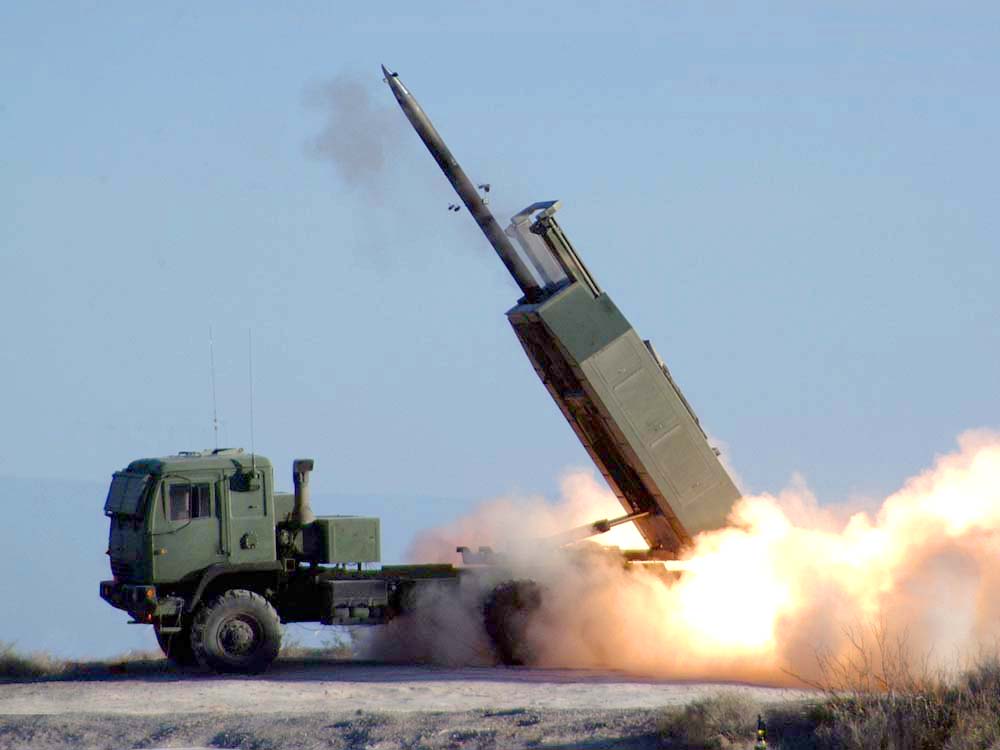The US Army has simulated rocket strikes on a Russian S-400 air defense system and a warship in the Pacific region.
This comes after the Army test-fired an unmanned High Mobility Artillery Rocket Systems (HIMARS) on June 16. The test was conducted in view of threats from Russia in the Pacific region.
India is on the verge of acquiring the highly advanced S-400 Triumf missiles despite reservations from its ally, the US, which views the Russian air defense system as a potential threat to its F-35 stealth fighters.
The AML or Autonomous Multi-Domain Launcher is an unmanned derivative of the M142 HIMARS. A computer-generated video released by the army showed two C-130s landing on an airstrip on an island in the Pacific Ocean, carrying the HIMARS vehicle and the unmanned AML, according to TheDrive.
Taking up firing positions, HIMARS launched a simulated Precision Strike Missile (PrSM) on a Russian Slava-class cruiser at sea. The other launcher, AML, fired an extended-range version of PrSM on a Russian-made S-400 surface-to-air missile system battery. The autonomous launcher also won over mock targets at shorter distances using unspecified artillery rockets.
According to Defense News, it was a 1.25-hour mock mission led by US Army’s 18th Field Artillery Brigade, based at Fort Bragg in North Carolina.
The deployment of HIMARS launch vehicles to forward locations through HIMARS rapid infiltration (HIRAIN) training helps to strengthen the rapid precision-striking ability and make the crew combat-ready.
The M142 HIMARS is the newest member of the Multiple Launch Rocket System (MLRS) family. It has the capability to launch Guided Multiple Launch Rocket System (GMLRS) rockets, Army Tactical Missile System (ATACMS) missiles, the next-generation Precision Strike Missile (PrSM), and Extended-Range GMLRS rockets.
Designed for the army in the late 1990s, the HIMARS is highly mobile, as the name suggests. They can be transported via C-130-type aircraft and Air Force C-17A Globemaster III air-lifters for rapid deployment around the world. It is currently operated by the US Army and Marine Corps.

The chassis-based AML has “a drive-by-wire capability that can autonomously follow a series of waypoints or operate in a “follow-the-leader” mode tethered to another vehicle, such as manned HIMARS launcher.
It can receive targeting information and launch commands remotely or directly through a control panel on the side of the vehicle, TheDrive quoted US Army as saying.
The AML can fire longer weapons including an extended range version of the PrSM or Increment 2 variant; it can allow units to deploy multiple launchers for shorter missions.
Since 2019, the US Army has been collaborating with Lockheed Martin on versions of the PrSM that can hit targets at previously prohibited distances, according to The Drive.
The AML is a potential launch platform for ground-based versions of the Navy’s multi-purpose SM-6 missile and the Tomahawk cruise missile.
“One of the biggest things it does is it just physically gives us more room without having to go spend gazillions of dollars to buy a whole new launcher,” according to the Director of the Army’s Aviation and Missile Centre Jeffrey Langhout.
Written By Kanika Sachdeva